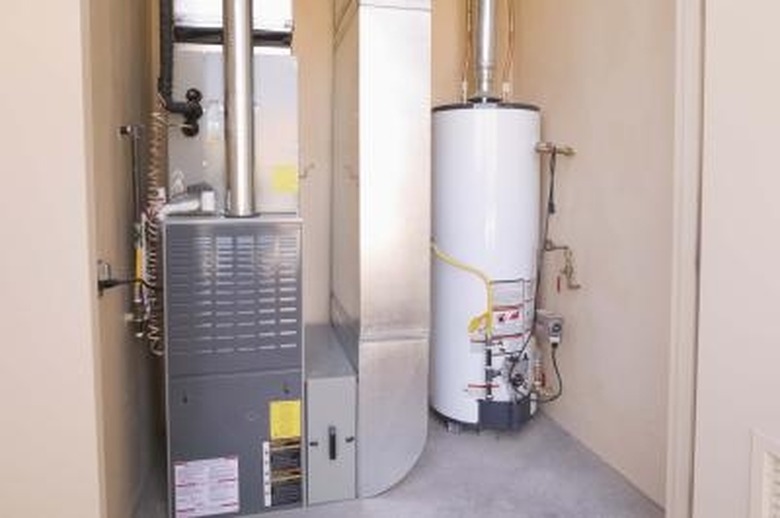How To Troubleshoot A Furnace Pilot Light That Won't Stay Lit
We may receive a commission on purchases made from links.
What do you do when you relight your pilot light but it won't stay lit? If you have an older furnace that has a standing pilot light, you're probably used to checking the pilot light and relighting it occasionally. But it shouldn't be a constant thing, so if it doesn't stay lit it's time to troubleshoot it. You can do some basic pilot light troubleshooting yourself before calling an HVAC pro.
How Standing Pilot Lights Work
How Standing Pilot Lights Work
Newer furnaces use electronic or hot-surface ignitors, but an older furnace might have a standing pilot light, which is a flame that burns continuously. The furnace supplies a constant, small amount of gas to the pilot light to keep it burning. It serves as the ignition source for the main burner. When the thermostat tells the furnace to run to heat your home, the pilot light ignites the main burner. If the pilot light is out, there's no way for it to light the main burner, which means your house will get cold quickly.
The pilot light location can vary, but it's usually near the bottom of the furnace, often behind an access panel. Look for a gas valve and two copper tubes attached to the control valve to lead you to the pilot light. Refer to the owner's manual if you still have it or look for a label on the furnace with instructions on how to light it if you're not sure of the location.
Dirty or Bad Thermocouple
Dirty or Bad Thermocouple
The thermocouple is often the culprit if your pilot light doesn't stay lit. If the thermocouple gets dirty, it could block the sensor. You can clean your thermocouple using an emery cloth or steel wool on the sensor tip to get rid of corrosion.
If it's clean but the pilot light continues going out, the thermocouple could be damaged or bent. Depending on the damage, you might need to replace the thermocouple to keep the pilot light lit. Unless you have an understanding of how furnaces work and feel comfortable working around gas appliances, this is a job for an HVAC professional.
Air Draft Issues
Air Draft Issues
An air draft can cause your pilot light to go out repeatedly. It's not always an obvious draft, so you might need to check carefully. Relight the pilot light and watch for flickering, which can be a sign of a draft. Place your hand near the flame, being careful not to touch it, to see if you can feel a draft. This can help you locate and prevent the draft if you feel one.
Bad Gas Regulator
Bad Gas Regulator
Your home has a natural gas regulator that can affect the gas supply to all gas appliances. If you have other gas appliances with pilot lights, check them to see if their flames are also struggling. If all of the pilot lights are going out frequently or are weak, the gas regulator might be providing low or inconsistent gas supplies to your appliances and needs to be replaced by a professional.
Gas Valve Problems
Gas Valve Problems
Your gas furnace has a gas valve that could affect the pilot light since it supplies the flame with gas. Check the gas valve to make sure it's not set to "off." If it's on and there's still an issue, the gas valve could be faulty. If there's something wrong with the gas valve, you'll need to have it replaced professionally.
Dirty Pilot Orifice
Dirty Pilot Orifice
The pilot tube can get clogged to the point where there's not enough gas flowing through to create a strong flame. A small flame can make the thermocouple think there isn't a flame there, which turns off the gas to the pilot light. Your pilot light flame should be blue. If you notice it's a weak yellow, it could be due to the pilot orifice.
To clean the pilot light, you need to turn off the gas and remove the pilot light and thermocouple. Make sure it's completely cool before you try cleaning it. If you don't feel comfortable removing parts, leave the cleaning to a professional HVAC company. The HVAC expert can also inspect other parts to look for potential issues.
